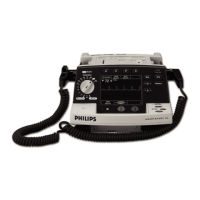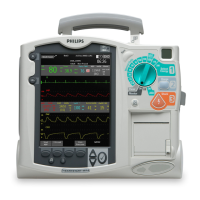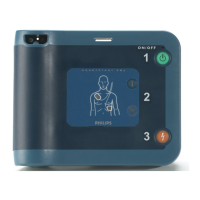Performance Verification Tests
2-16 Performance Verification and Safety Tests
Visual Inspection
1. Examine the cables, supplies and accessories.
a. Are they the right ones?
Sometimes a problem can be resolved simply by using the cables and
supplies with which the unit was designed to operate.
z Are these the brands and models your institution purchases, or
are they “strays” from somewhere else?
z Are they Philips-approved, or are they some other brand?
The unit should have:
z An undamaged, fully charged M3516A battery.
z A new, dry roll of Philips 40457C/D printer paper. Printer paper
may jam if paper is wet. Also, printer may be damaged if wet
paper is allowed to dry while in contact with the printhead
elements.
z Cables and sensors which are approved by Philips and known to
be good. Also make sure that all external cables are fully inserted
in their receptacles.
z A new, empty Data Card of the correct type (M3510A). Plugging
in the wrong type of card (e.g., a modem card) can cause startup
failures.
b. Are the consumables fresh?
Check the ECG electrodes and defibrillator pads for freshness (date
code or expiration date) and condition.
Pass: Accessories and supplies are those specified by Philips. Electrodes
and pads are within their expiration date and appear usable.
Packaging is unopened and shows no tears or punctures.
No corrosion is visible on connector sockets, electrodes, or pads.
2. Examine the entire unit.
a. Inspect the unit on all sides, looking for:
z Signs of mechanical damage to the case, membrane switches,
speaker cover, display window, or printer.
z Loose or missing hardware.
z Evidence of liquid spill. Check inside the printer bucket and
clean out any accumulation using gloves and an approved cleaner.
Also check for residue in the connectors at the back of the unit
(ECG, SpO
2
, ECG Out/Sync).
z Residue on the thermal printhead.
z Damage to connector pins, or corrosion on the pins, or debris in
the connector.

